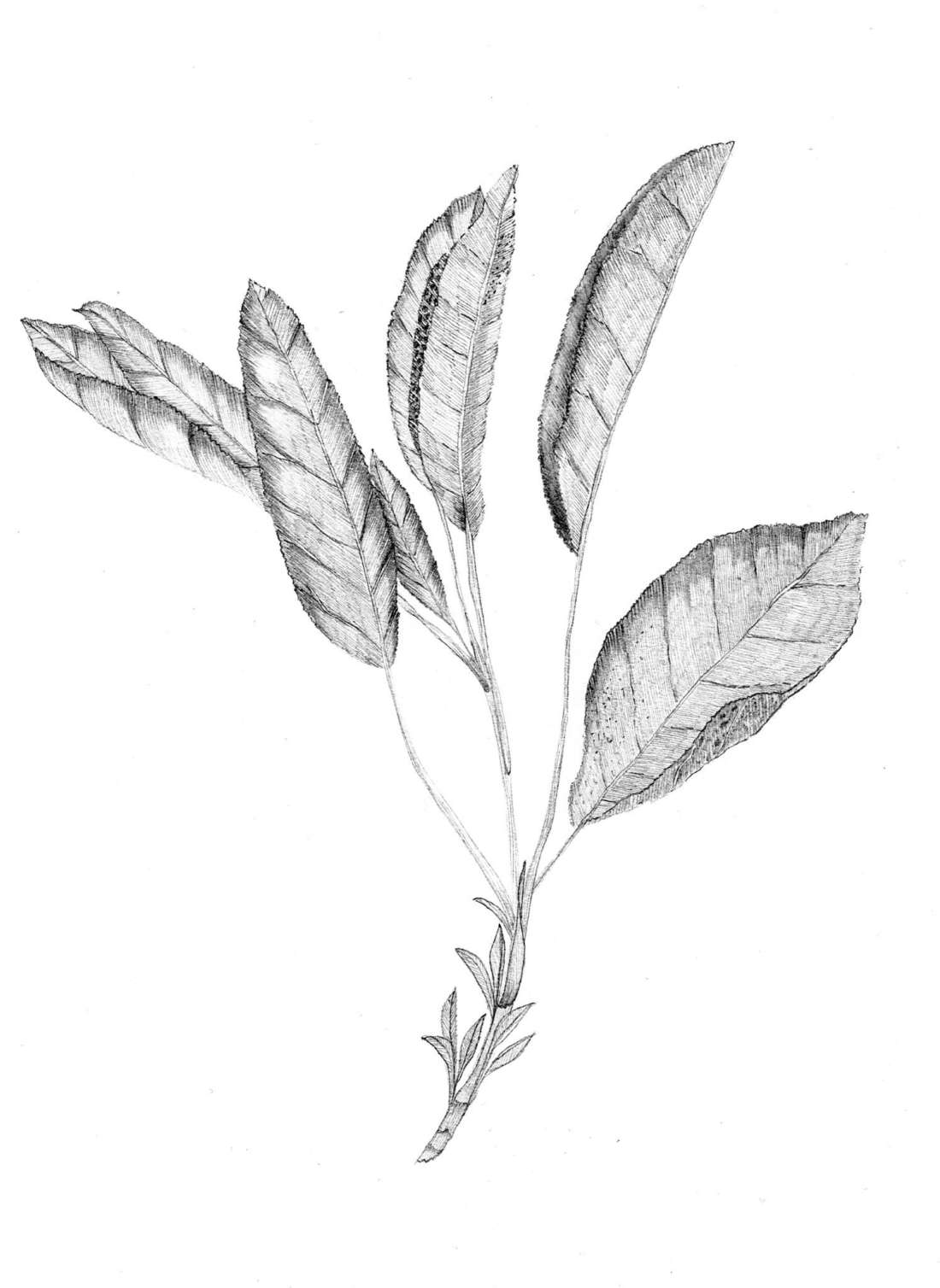Category — DIY

Mini havens - Herb gardens for tea
Some people are born gardeners.
I’m not among them, but my partner, Phil, can literally make the desert bloom. When we lived on the northern edge of the Sonoran Desert, Phil grew my go-to oasis on the small square of our back patio, a container garden just outside the kitchen door. It came complete with a small fountain fed by stored rainwater, serving hummingbirds as well as me.
When I felt hungry for more, I’d head to the nearby Tucson Botanical Gardens, which were founded by our happy and eccentric neighbour Harrison Yocum. In his own backyard, reputedly to invite beneficial spirits and ward away the rest, Yocum had stacked hundreds of precisely placed stone and crystal cairns. At the Botanical Gardens, he had planted an extensive collection of mints, which were as out of place in a desert as I. I’d visit them to open a lacuna within my busy mind, running my hands lightly up their square stems to gather their varied fragrances—chocolate mint, apple mint, ginger mint—their scent alone my feast. If I arrived with heaviness in my heart or dryness in my spirit, these evils would be banished by Yocum’s community paradise.
I was grateful for these gardens, but my own first essays into horticulture waited until I had moved from Arizona to New Zealand’s more hospitable climate. My first step was to develop a small herb garden just outside our kitchen window, a spiral of about twenty species sharing a square metre or so. Later I added a simple set of containers on the back porch, including several potted mints, inspired by my Arizona havens. In the meantime, Phil complimented my pottering by converting our one-hectare lifestyle block into an edible paradise of organically-grown goodness. (Well, I did help.)
Through this I have kept my fascination with small gardens, with how much well-being can be packed into a miniature space designed for minimal upkeep. I may no longer need a desert oasis, but I do still want a stillness in the midst of a full life: the home garden as haven, not workspace, a wee spot that lifts spirits in a space no larger than a doorstep, a balcony, a patio.

Easy-to-grow herbal teas
Perennial herbs are my plants of choice. Many of them are easy to maintain, harvest, and use; they have health benefits more often than not; there’s nothing quite like a cup of tea made from leaves picked fresh.
From a health perspective, there’s good reason why peppermint and chamomile are the most common tea herbs. Peppermint benefits the entire digestive system. Chamomile supports a restful sleep; its relaxant properties make it helpful for relieving stress, easing muscle and menstrual cramping, reducing irritability, ameliorating headaches, including migraines. It’s an anti-inflammatory and a digestive tonic, and it can reduce antihistamine levels, alleviating hay fever symptoms. It grows easily. From a few starter plants of the perennial Roman chamomile (Chamaemelum nobilis), I now harvest a profusion of daisy-like summer flowers that dry and store well for year-round use. Perhaps I shouldn’t admit this in public, but sometimes I don’t tend them for years, except to harvest. They thrive.
Why stick to the commonest herb teas? A lot of everyday culinary herbs make exotic and healthful infusions. I’m particularly fond of thyme, especially if I have a bit of a winter chestiness. The best is the most common, Thymus vulgaris. In general, any herb with the species name vulgaris or officinalis will contain more volatile oils, be more healthful, and grow more robustly.
Take sage. The common green Salvia officinalis is anti-oxidant, anti-inflammatory, a calming nerve tonic, with value for preventing Alzheimer’s and for relieving menopausal symptoms. I have mine planted in a thin strip between the laundry line and the fence, right next to some purple and gold variegated cultivars bred for foliar aesthetics, pretty, but—in addition to lacking the medicinal value of their greener sister—a struggle to support. By “struggle”, I mean I do have to feed them compost or a liquid manure once or twice a year, along with weeding around them because they can’t cope with competition. My green sage only requires the odd aggressive pruning to keep it from overshadowing its less resilient neighbours.
Other easy-to-find, easy-to-grow, and healthful tea herbs include lavender, rosemary, and even yarrow—a common weed with flat white corymbs that serve as landing pads for bees and butterflies. All of these like sun, and they are easily interplanted. They’ll fit together in a small space if you prune the woody herbs—another incentive to keep on harvesting. I’ve been warned to prune my lavender more than I think I should, especially in the first two years, to keep it from getting leggy.
If you have a shady spot with only filtered sunlight, there’s always the greater mint family (Lamiaceae). Try de-stressing with catmint tea or cheering up with lemon balm (which accepts shade or thrives in sun). You might also try lungwort, with its beautifully broad, white-spotted, deep green leaves and petite little pink-to-purple flowers come spring. It’s used for (you guessed it) lung issues, including congestion, chronic bronchitis, and asthma. It soothes sore throats. If you’re not used to mucilage, you may prefer a bit of honey in your lungwort tea.
Planting bits and bobs
If you’ve read this far, you’ve probably figured out that my approach to gardening for personal wellness involves creating enjoyable spaces with minimal labour. Over time, I’ve collected a few tips for garden designs that make it easier for me to tend my plants.
Container gardens, in my experience, require more effort than planting straight into the ground. Potted plants require more frequent watering, so I keep them where I’ll see them during my daily routine. They generally require repotting at least annually, with roots and aerial parts clipped down to size and fresh potting soil added in. Containers do offer some advantages—they can be kept even on an apartment balcony or a kitchen bench, and they can be moved for summer shade and winter warmth. I also keep plants potted when I’m afraid they’ll take over my garden (nasturtium) or when I’m afraid I’ll lose them when they play Persephone, undergrounding over winter (mints).
When I plant direct into the ground, I design my beds to suit my reach. Gardeners are commonly advised to keep the radius of herb spirals and circular beds to 1 metre, and the width of beds surrounded by pathways to 2 metres. I personalise my beds to my body, making them smaller than the standard. I have a weak lower back, so I develop all my paths to make sure that, without compacting the soil by stepping on it, I can reach everywhere in my garden while squatting with an upright back. Additional ergonomic advice includes choosing tools with wide grips, considering raised beds, and, if making multiple beds, shaping paths in diamonds to avoid square turns, which can be hard on your body, especially once you’re pushing a wheelbarrow. If you’re strong and agile and aren’t yet living where you plan to grow old, go ahead and have a chuckle, but do at least leave room for the wheelbarrow!
With herbs, though, there’s little need for a full-sized bed. A bit of soil by the front step, a wide spot between a fence and a pathway—herbs in the ground can tolerate poorer soil than tomatoes and lettuces, so most any patch will do. A ground cover reduces weeding. Try creeping savories and rosemaries, or strawberries and Roman chamomile spreading extravagantly on runners. These require weeding until they are densely established, but once that’s happened, they’ll not only keep down weeds, they’ll protect soil life and reduce evaporation and soil temperature fluctuations. Thick mulch will do the same.
A natural approach to wellness
It’s tempting to think of gardening as something for people with time, with land, with excess energy. Sometimes I think idylls of self-sufficiency are a sneaky re-packaging of conquer-the-earth mentality, a contemporary approach to moral rightenousness in an age when our large-scale food systems are taking us to hell. How we relate to food is among the greatest ecological and social justice challenges of our time, still!
Still.
As my friend Helen reminds me, our gardens can support us if we allow them, holding us up, not weighing us down with chores.
Sometimes I find this easiest to remember in small spaces where I know each plant well enough to let friendship bloom. (Plants can sense sound, and research in the developing field of plant intelligence suggests gardeners’ attitudes may influence plant behaviour. Maybe those of us who sing to our plants aren’t dotty—we’re prescient!) Although my garden now spills into a larger space, I best love the abundant oasis right outside my kitchen door: potted mints, lemon verbena close at hand for treating guests, unkempt thyme, and chives my teenager clips for ramen noodle soups.
All of these require so little upkeep they remind me I’m not the one who gardens, at least not in a central way. Sunshine gardens, and rain, and pollinators, and other insects, and all the lovely little critters in the earthy soil, and the weeds that improve the soil, and all the plants, with their great wisdom encoded in the seeds they throw generously around the place, in their herby DNA that somehow, by some mystery of co-evolution, knows me well enough to know what I need to stay healthy, to stay connected to the earth, to thrive.
Sharon Stevens lives with her family in Ashhurst (near Palmerston North). She co-leads a range of eco-initiatives, facilitates community workshops for adults interested in sustainable and resilient living, and seeks to learn from nature. Her publications are diverse. Currently she is writing a YA fantasy eco-gothic addressing personal grief, Earth grief, and healing.
slowfarm.co.nz
Illustration: Lois Fletcher-Cush